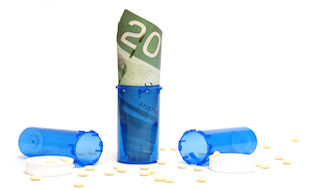
Spending on prescription drugs is expected to total $33.7 billion in 2018, according to a new report by the Canadian Institute for Health Information.
Of that total, $19.3 billion will come from private insurance and individuals paying out of pocket, while the remaining $14.4 billion will be financed by the public sector. As a whole, drug spending is just a portion of the projected $253.5 billion in total Canadian health spending in 2018.
For the sixth consecutive year, the CIHI is expecting biologics to make up the highest proportion of public drug spending, at 8.2 per cent, followed by antivirals to treat hepatitis C (five per cent).
Read: Drugs pushing Canada’s total health spend to $242 billion in 2017: CIHI
Overall, health expenditure is expected to rise 4.2 per cent in Canada in 2018, reaching $6,839 per person. Broken down at a provincial level, Alberta’s anticipated health expenditure per capita is $7,552, compared to British Columbia ($6,597) and Ontario ($6,584.)
“Drug spending is increasing more than the other major areas of health spending, with a large proportion of drug spending going toward high-cost drugs for a small number of individuals,” said Brent Diverty, vice-president of programs at the Canadian Institute for Health Information, in a news release. “Examining recent trends in drug spending is helpful as Canada contemplates policies like international trade agreements, such as the United States–Mexico–Canada Agreement, and national pharmacare. Opportunities to benefit from life-changing drugs have never been greater; but at the same time, spending on drugs through public drug programs has never been higher.”
Read: Public drug plan spending continues upward trend: PMPRB
Overall, the CIHI expects hospitals to account for the largest share of health spending, at 28.3 per cent, followed by drugs (15.7 per cent) and physician services (15.1 per cent). The remaining 41 per cent will be spent on other health-care goods and services, such as long-term care facilities and health professionals.
